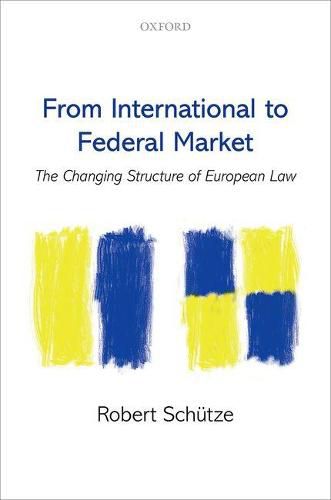Readings Newsletter
Become a Readings Member to make your shopping experience even easier.
Sign in or sign up for free!
You’re not far away from qualifying for FREE standard shipping within Australia
You’ve qualified for FREE standard shipping within Australia
The cart is loading…






What are the different market types that shape the European Union’s internal market? Schutze proposes three models that assist in explaining the transitions in the structure of the EU internal market. The international model demands that each state limits its external sovereignty, while retaining internal sovereignty over its national market. The federal model declares that within a common market states must lose a part of their internal sovereignty, and in accordance with the principle of home state control, goods are entitled to be sold freely on a foreign market in compliance with home state law. The national model proposes that the trade restrictions above a legislative or judicial Union standard should be removed. Schutze’s book analyses the changing structure of European law in relation to the European internal market. The General Part starts out by offering a historical analysis of the relationship between international law and market coordination up to the twentieth century but also provides an in-depth analysis of the constitutional principles which controlled the integration of the US common market . The Special Part then specifically addresses the decline of the international model in relation to the EU internal market and the corresponding rise of a federal market philosophy after Cassis de Dijon. The final chapter explores the exceptional constitutional principles that apply to fiscal matters. This is the second volume in Schutze’s trilogy on the Changing Structure of European Law . Exploring the changing structure of negative integration in the past 60 years, the book complements his previous volume From Dual to Cooperative Federalism which analysed the evolving structure of positive integration. A third volume will finally explore the formal constitutional aspects in the evolution of the European Union into a federal union of States.
$9.00 standard shipping within Australia
FREE standard shipping within Australia for orders over $100.00
Express & International shipping calculated at checkout
What are the different market types that shape the European Union’s internal market? Schutze proposes three models that assist in explaining the transitions in the structure of the EU internal market. The international model demands that each state limits its external sovereignty, while retaining internal sovereignty over its national market. The federal model declares that within a common market states must lose a part of their internal sovereignty, and in accordance with the principle of home state control, goods are entitled to be sold freely on a foreign market in compliance with home state law. The national model proposes that the trade restrictions above a legislative or judicial Union standard should be removed. Schutze’s book analyses the changing structure of European law in relation to the European internal market. The General Part starts out by offering a historical analysis of the relationship between international law and market coordination up to the twentieth century but also provides an in-depth analysis of the constitutional principles which controlled the integration of the US common market . The Special Part then specifically addresses the decline of the international model in relation to the EU internal market and the corresponding rise of a federal market philosophy after Cassis de Dijon. The final chapter explores the exceptional constitutional principles that apply to fiscal matters. This is the second volume in Schutze’s trilogy on the Changing Structure of European Law . Exploring the changing structure of negative integration in the past 60 years, the book complements his previous volume From Dual to Cooperative Federalism which analysed the evolving structure of positive integration. A third volume will finally explore the formal constitutional aspects in the evolution of the European Union into a federal union of States.